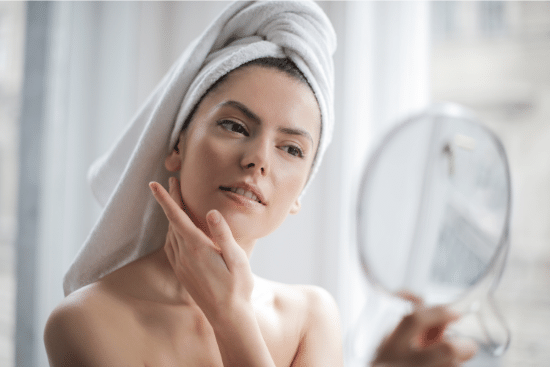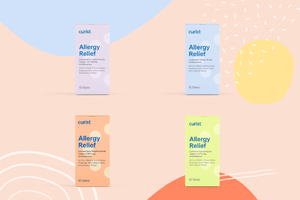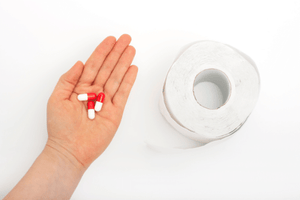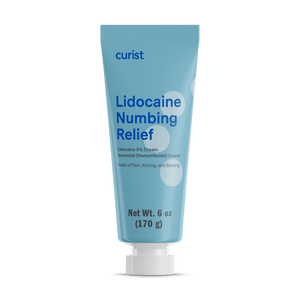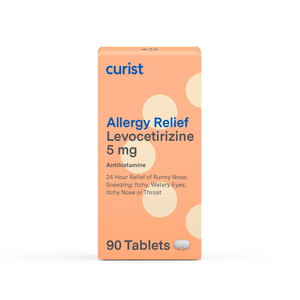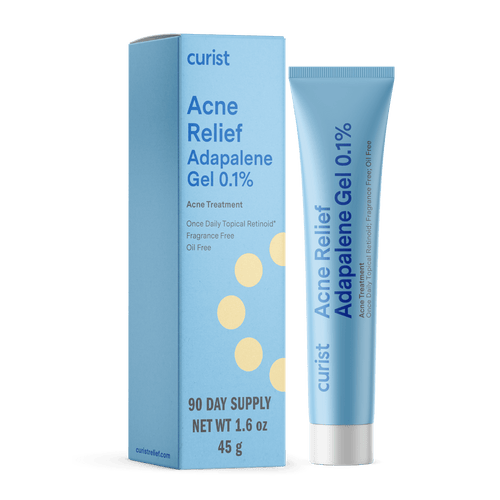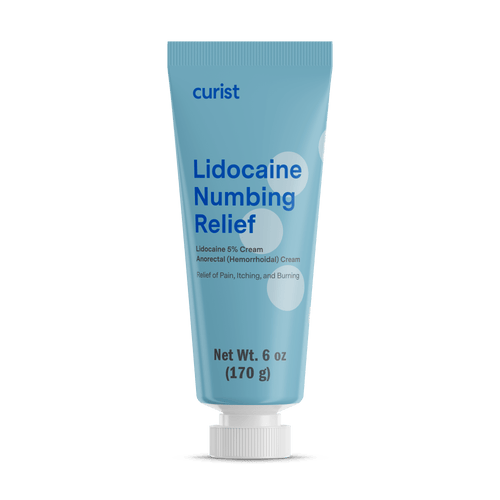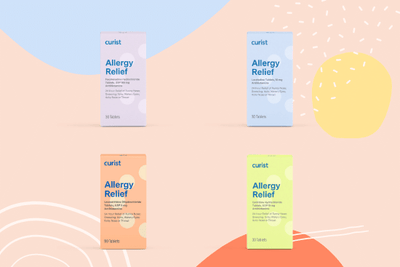By Dr. Allison Dinh, PharmaD, Curist Pharmacy Advisor
Curist delivers over-the-counter medicines to your door at a fraction of the price of traditional brands. We hope everyone stays safe and healthy during this time.
Walking down the skincare aisle, you may find yourself in over your head with the different ingredients found in products. You may have heard of adapalene, tretinoin, retinol, and benzoyl peroxide, but what are they exactly? Curist is here to break it down so that you can choose what’s best for you!
What are Topical Retinoids?
Retinoids are derived from vitamin A and are used for a variety of skin conditions: acne, wrinkles, hyperpigmentation, and more. Topical retinoids are used directly on the skin and can come in many different forms such as cream, gel, and liquid. Some common topical retinoids include adapalene, tretinoin, retinol, and tazarotene.
What is Adapalene?
Adapalene is a topical retinoid that is used to treat acne and signs of premature aging such as fine lines and hyperpigmentation. It is comedolytic which means that it prevents comedones, clogged pores, from forming. Additionally, it is considered a skincare holy grail product for its anti-aging properties. Adapalene promotes cell turnover which in turn reveals newer, more elastic skin. The 0.1% strength of adapalene is available over-the-counter so you can buy that form without a prescription!
What is Tretinoin?
Tretinoin is a retinoid that is approved for use in combating acne and signs of photoaging such as wrinkles and hyperpigmentation. It has a long history in the field of dermatology that dates back to almost half a century. Tretinoin activates three retinoic acid receptors that play roles in cell growth, gene expression, and protein synthesis. This ultimately reduces clogged pores and promotes skin turnover for clearer skin. However, you need a prescription in order to use tretinoin unlike some other acne products.
What is Benzoyl Peroxide?
Benzoyl peroxide is a topical agent that kills bacteria and is often used in combination with other products (but everything–read below!) to treat acne. It is found over-the-counter in many different forms: creams, gels, lotions, cleansers, and more. Unlike other bacteria-eliminating agents, benzoyl peroxide does not foster antibiotic resistance which is always a welcome trait. However, benzoyl peroxide can bleach your clothes and skin so users need to exercise care when using it.
What is Retinol?
Like adapalene and tretinoin, retinol is a type of retinoid. It is available over-the-counter which makes it an affordable skincare ingredient. Since it is OTC, it is not as strong as prescription retinoids in comparison, but it is still potent enough to provide a number of skin benefits. Retinol gets into the deeper layers of the skin and boosts elasticity and collagen production. Therefore, it is helpful for treating fine lines and acne.
Are Retinoid and Retinol the Same Thing?
Retinoids and retinol are not exactly the same thing, but rather, retinol is a type of retinoid! But what are retinoids? Simply put, they are derivatives of vitamin A and they are useful in combating acne and photo-aging through their anti-inflammatory and comedone-destroying properties. Retinoids can be classified into different generations with retinol and tretinoin belonging to the first generation and adapalene in the third generation.
Are Retinol and Adapalene the Same Thing?
Both retinol and adapalene are retinoids, but they are not the same thing. Think of it like this–both broccoli and cauliflower are vegetables with florets but one isn’t the other. Adapalene is stronger and more potent than retinol because it contains active retinoic acid. Retinol is not as potent and is lower in strength.
What’s the Difference: Adapalene vs Tretinoin vs Benzoyl Peroxide vs Retinol
Between the four of these skincare ingredients, benzoyl peroxide is the one outlier that is not a retinoid. Adapalene, tretinoin, and retinol all fall under the retinoid umbrella. However, in terms of accessibility, tretinoin is the outlier because it is available prescription only. Benzoyl peroxide and retinol are over-the-counter, and adapalene in 0.1% strength is available OTC (see Curist Acne Relief). When it comes to side effects, tretinoin causes the most skin irritation and redness. Adapalene and retinol can can itchiness and redness as well, but it is to a lesser extent than tretinoin. Benzoyl peroxide carries the unique side effect of its ability to bleach clothes and skin.
What Works Better for Acne: Adapalene, Tretinoin, Benzoyl Peroxide, or Retinol?
Everyone’s skin is different–from the genetics, texture, pigmentation, and more. Therefore, there is not a nice “one size fits all” answer as to which acne medication would work best for you. However, we do have some trends based on randomized controlled trials that have been performed.
Let’s start with the OTC options: benzoyl peroxide and retinol (don’t worry–we didn’t forget about adapalene 0.1% gel!). Both of these agents have established efficacy in treating acne, with benzoyl peroxide being useful for killing acne-causing bacteria and retinol exhibiting the comedolytic properties of retinoids. However, on their own, benzoyl peroxide and retinol tend to be used for mild to moderate acne. More severe acne requires the use of more powerful, prescription-strength topical retinoids such as adapalene and tretinoin. This is where adapalene 0.1% gel comes in handy! It is available OTC and has demonstrated effectiveness in treating acne.
Now let’s compare adapalene and tretinoin. In numerous studies, both have been shown to work well for acne treatment with similar efficacy. When compared with tretinoin 0.025% gel and tretinoin 0.05% cream, adapalene was found to be comparable. However, when adapalene 0.1% and tretinoin 0.05% gel, tretinoin has the edge anti-acne. So overall, tretinoin may be slightly more effective in combating acne. However, patients experience better tolerability with adapalene versus tretinoin. Therefore, there are pros and cons to consider when choosing a topical retinoid.
What Works Better for Anti-Aging: Adapalene, Tretinoin, or Retinol?
The good news is that all of these options, adapalene, tretinoin, and retinol are great for combating signs of aging. Of these three agents, tretinoin is the most potent and retinol is the least potent. However, tretinoin’s tendency to cause skin irritation and itching may be bothersome for some patients. Adapalene has been shown to have similar efficacy in preventing wrinkles and fine lines without as many of the side effects. In that regard, adapalene strikes a good balance in effectiveness and side effect profile. To learn more about anti-aging benefits of adapalene, please visit Is Adapalene Good for Anti-Aging?.
Can I Take Adapalene and Benzoyl Peroxide Together?
Yes, you can take adapalene and benzoyl peroxide together! In fact, some formulations have both of them already mixed together in a tube! Together, they fight acne through different mechanisms. Adapalene increases cell turnover, reduces inflammation, and decreases comedones on the skin. Benzoyl peroxide kills bacteria, preventing them from clogging pores and causing acne.
